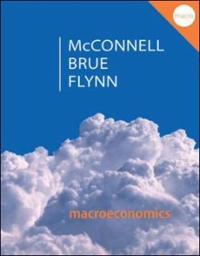Question
1.Disposable income equals: Select one: a. income after adding transfers and subtracting taxes. b. income minus both saving and taxes. c. consumption minus taxes. d.
1.Disposable income equals:
Select one:
a. income after adding transfers and subtracting taxes.
b. income minus both saving and taxes.
c. consumption minus taxes.
d. the sum of consumption and income.
e. income minus saving.
2.Suppose there is a simultaneous central bank purchase of bonds and increase in taxes. We know with certainty that this combination of policies must cause:
Select one:
a. a decrease inM.
b. a decrease ini.
c. an increase ini.
d. an increase inY.
e. a decrease inY.
3.Which of the following is not a characteristic of bonds?
Select one:
a. They are sold for a price that varies inversely with the interest rate.
b. They pay a negative interest.
c. They pay a positive interest.
d. They cannot be used for transactions.
e. They pay zero interest.
4.We would expect which of the following to occur when the central bank conducts an open market sale of bonds?
Select one:
a. A decrease in the money multiplier.
b. An increase in high-powered money.
c. A decrease in the monetary base.
d. An increase in the monetary base.
e. An increase in the money multiplier.
5.Suppose a one-year discount bond offers to pay $1250 in one year and currently has an 18% interest rate. Given the information, we know that the bond's price must be:
Select one:
a. $759.
b. $1159.
c. $1059.
d. $859.
e. $959.
Step by Step Solution
There are 3 Steps involved in it
Step: 1

Get Instant Access to Expert-Tailored Solutions
See step-by-step solutions with expert insights and AI powered tools for academic success
Step: 2

Step: 3

Ace Your Homework with AI
Get the answers you need in no time with our AI-driven, step-by-step assistance
Get Started


